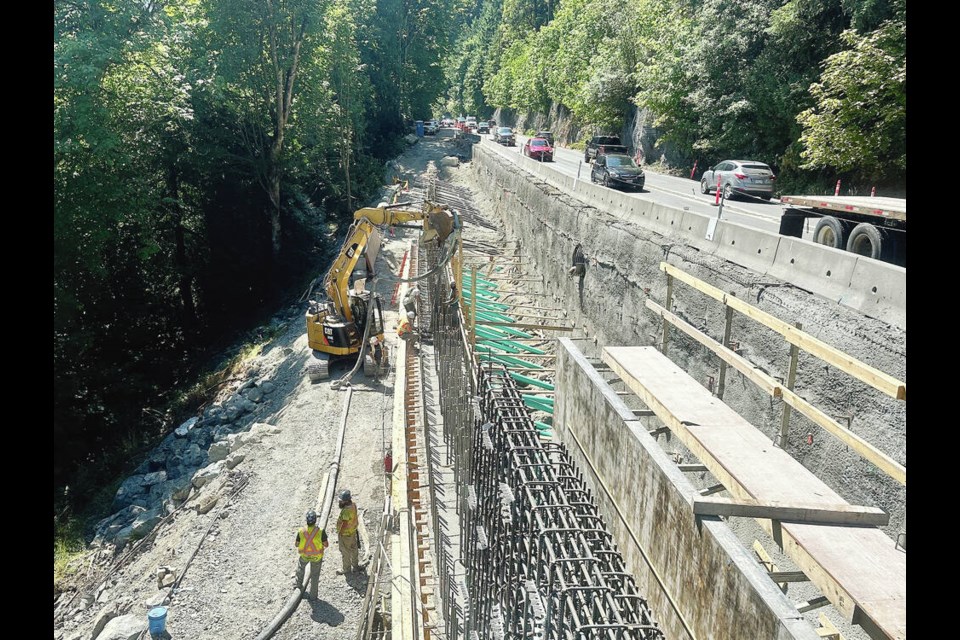It’s impossible to see from the comfort of your vehicle the work that went into repairing a crucial piece of the Malahat highway, now complete after two years.
The only thing marking the site of a dangerous washout at Tunnel Hill in November 2021 is new paving. But below the road grade and down the bank, it’s an engineering marvel, one that’s intended to withstand extreme-weather events brought on by climate change.
The “atmospheric river” rain that began on Nov. 13, 2021, and eventually dumped 188 millimetres over 72 hours, overwhelmed a culvert taking water off the cliff face at Tunnel Hill.
Water spilled over the road, taking out the shoulder on the northbound lane. The wall of stacked concrete blocks that held up the 50-metre stretch of highway, keeping it from tumbling down the steep slope to Finlayson Arm, was compromised.
Fixing the 50-metre-long section about a kilometre north of Finlayson Arm Road took two years, $24 million and many night closures and lane shutdowns.
Janelle Staite, regional deputy director for highways and regional services division, said the highway’s basic foundation had to be redesigned in a way to accommodate future heavy rainfalls as climate change brings more extreme weather.
“We based [the design] on climate adaptive modelling, so the infrastructure could handle volumes of water for future events,” said Staite.
That involved installing three culverts and doubling the diameter of each, from a single 600-mm culvert to three with 1.2-metre diameters.
A total of 84 rebar-enforced piles were driven to bedrock, ranging in depth from five to 20 metres and up to one metre in diameter.
Each of the piles was secured to bedrock using corrosion-protected anchors to provide horizontal stability to a new 100-metre-long retaining wall that supports the highway between the cliff and slope.
The ministry said the challenging project, built by Windley Contracting Ltd., has improved safety and reliability for users of the highway, which handles up to 35,000 vehicles a day.
“We know the Malahat is a critical connection for residents, businesses, emergency services and the movement of goods on the Island,” Transportation Minister Rob Fleming said in a statement.
“The completion of this project doesn’t just ensure safety for drivers. It increases our resiliency for dealing with future climate events and it means people can keep counting on this route to get to their work, homes and families.”
The project was the first contract awarded for permanent repairs to British Columbia highways in the aftermath of the 2021 rains and floods that wrecked sections of the Coquihalla Highway and other areas through the Fraser Canyon.
>>> To comment on this article, write a letter to the editor: [email protected]




